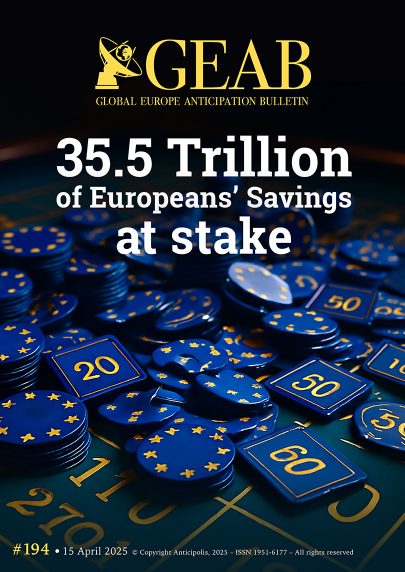GEAB 194
Europe has long benefited from a powerful economic engine: the household savings.
Built up over decades, this financial cushion, estimated at 35.5 trillion euros (against 14 trillion public debt), has served both as a buffer in times of crises and a vital source of funding for the major transformations ahead – the climate transition, reindustrialisation, defence, innovation, and more.
This “pactole“[1] as the French would say, is therefore the subject of numerous attempts to mobilise it. At European level, last November, Christine Lagarde was clear about strategy aimed at bringing together capital markets, mainly to channel savings towards innovators at European level as part of her “Kantian revolution”[2] (since then, Europe has voted 800 billion for armaments…).
At national level, tax incentives (even punitive for tying up capital) and ad hoc financial products are aimed at savings out of their wallets. The aim, of course, is for savers to boost their capital and grow richer at the same rate as the continent will grow richer if this funding is properly managed. Some key questions on this topic:
- Is the EU able to produce a vision accurate enough of its future to channel these savings correctly?
- Is it also well equipped to guarantee a return on investment for savers and no-one else?
- Finally, do Europeans have enough confidence in the European institutions to play the game?
Login

35,500 billion euros is the total amount of European savings. It's also the level of US federal debt. In twenty years, that debt has gone from 5% to 123% of [...]
Stock markets are reeling in the wake of Donald Trump's thunderous announcements. Is the US ruled by an erratic and reckless leader? Or are we witnessing the emancipation of politics [...]
At the crossroads of a Russian past, an American present and a European future, Ukraine, which for the last 3 years has been a testing ground for the wars of [...]
The dread of the climate crisis could soon be replaced by that of a "global seismic crisis", i.e. a gradual increase in the number and severity of earthquakes. If we [...]
After almost 20 years of anticipating the collapse of the Western-centric system, the GEAB now feels it has a duty to continue to identify the crises in the making, but [...]
As in every stock market crisis, stocks will change hands. Insofar as the crisis is largely provoked, it is likely that state structures - starting with the United States - [...]


Comments